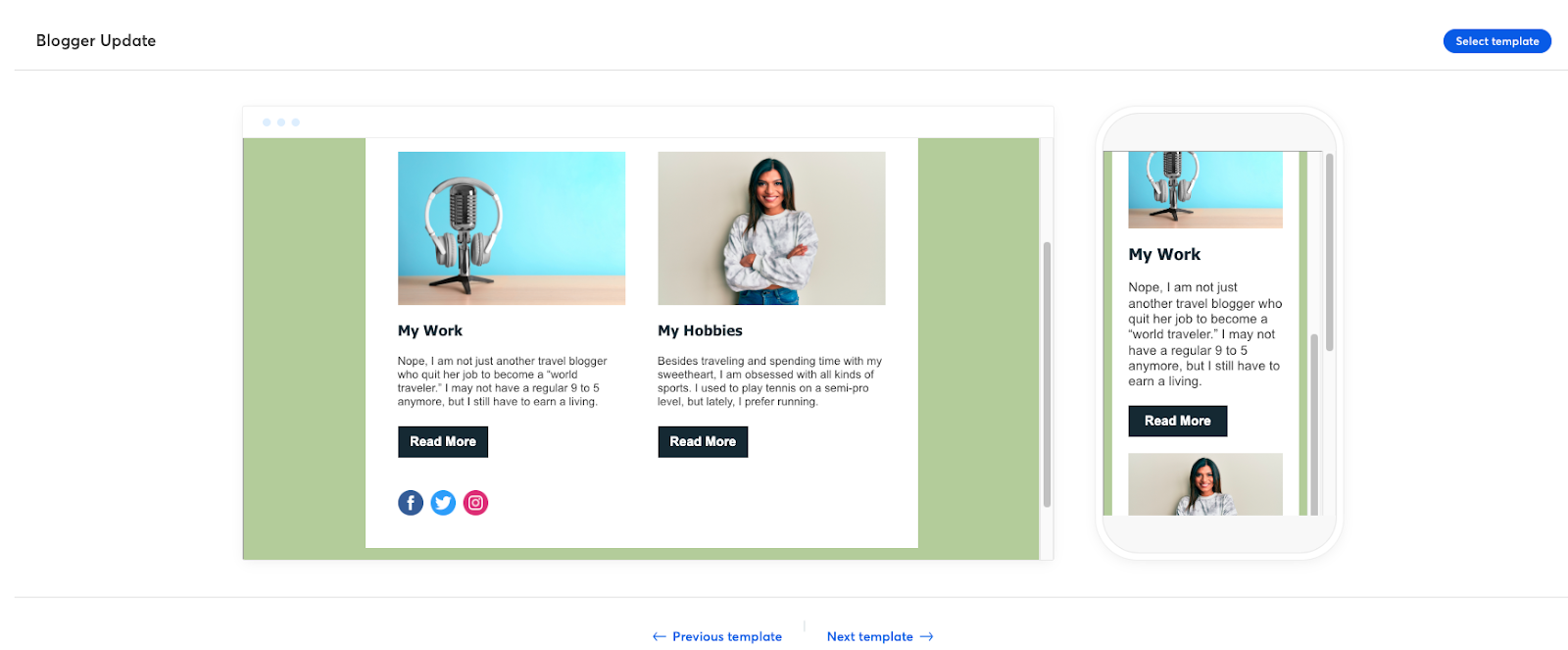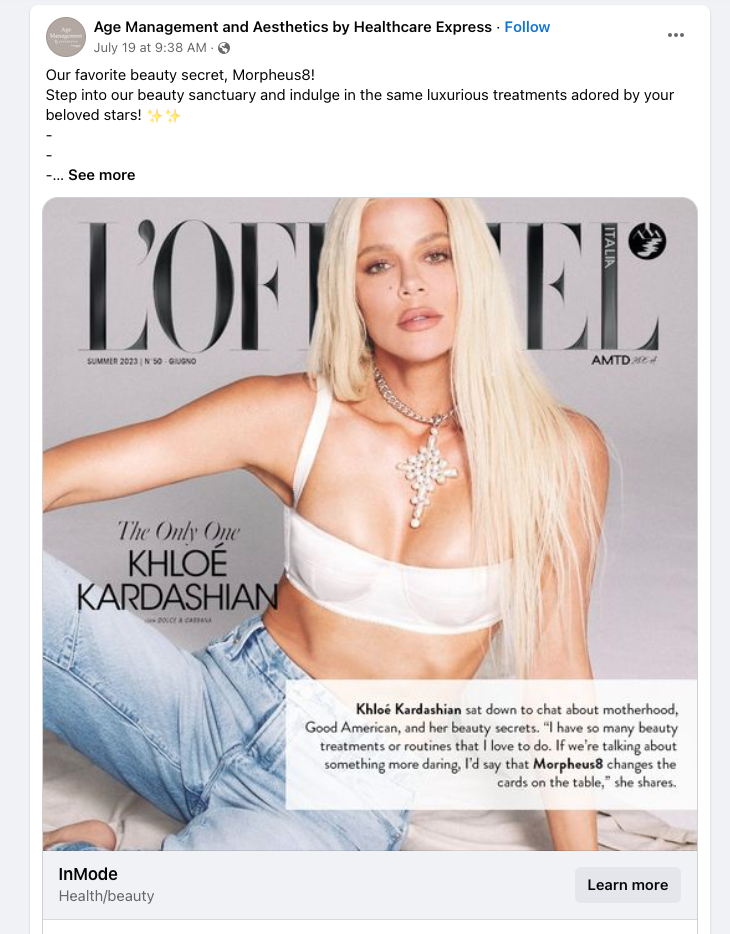
Creating quality content takes time. I spend more than half of each workday writing articles and designing branded assets on Canva. And the rest of that time goes to planning the content, publishing/submitting it, and monitoring it once it’s published.
That’s why content curation is the bee’s knees. The fox’s socks. The ant’s pants. It takes a fraction of the time and mental energy while filling out your content calendar and keeping your audience engaged.
Think of content curation as being a DJ for your business’s channels. You want to spin the best hits from various sources and share them with your audience. A content curation strategy lets you provide value to followers, boost your social media presence, and enhance your authority.
In the words of Corinne Bailey Rae, Girl, put your records on, tell me your favorite song…
What is content curation?
Wondering what is content curation? Content curation is the process of collecting, organizing, and sharing content from various sources.
A few examples include:
- Links to hand-picked articles
- User-generated content (UGS) from fans of your brand
- Interviews
- Listicles and roundups
- Shared social media and blog content from other creators
Now, what is a content curator? They curate these types of content in a savvy way that keeps their audience engaged.
The benefits of content curation for businesses
Content curation is a versatile and powerful tool. You can use it to:
- Save time and resources. Instead of spending hours researching news and trends, you can curate reliable content to supplement your posts, blog articles, and newsletters.
- Increase your reach. Gain traction with your target audience. When you share or cite the work of others, you increase the chances that you’ll be found outside of your immediate network by people searching for relevant material.
- Enhance your brand authority. Showcasing industry stories builds trust, demonstrating your understanding of a niche.
- Vary your content. Keep your audiences engaged with different types of content from a variety of sources.
- Stay fresh. By mixing curated content pieces with original ones, you can consistently deliver high-quality content without burning out your creative energy.
For example, newsletter creation can take a lot of time, and it can be challenging for brands to find new material that keeps their audience engaged. For this, a content creator could incorporate links to insightful articles from industry experts. These pieces have the added benefit of being informational (and, thus, beneficial) to the reader; there’s nothing “sales-y” about them.

How content curation differs from content creation
Content curation and content creation are two different processes. It’s important to create original content tailored to your brand’s goals and objectives and creating original content should be at the heart of your content strategy.
Content curation, on the other hand, involves gathering existing content from various sources, putting them together in a meaningful way, and then sharing it with your audience. Curated content should be used to support your created content.
The key is to strike a balance. Use curated content to share valuable third-party pieces and keep your audience engaged. Use original content to highlight your brand’s unique perspective and expertise.
Why should you incorporate content curation in your marketing strategy?
Curating content should inform your approach to selecting and sharing material. Here’s how that can be done:
Enhance your audience’s experience with curated content
Become a trusted advisor, a problem-solver, and a source of valuable insights. By sharing curated content, you’re broadening their horizons and introducing them to fresh perspectives. It’s like recommending a great book to a friend.
For instance, if you’re running a fitness studio, you can share nutrition tips, workout routines, and motivational posts from renowned fitness gurus. This way, you’re enhancing your audience’s experience by providing comprehensive value beyond your services.
Save time and effort with content curation
58% of people who consider themselves content creators have a full-time job, and even dedicated content marketers have a slew of other responsibilities. As for small businesses handling their marketing in-house, it’s usually one small but important part of their day-to-day responsibilities.
Creating original content is fun but time-consuming. Think of content curation as the potluck of dinner parties. You bring your dish (original content), but you also get to sample others’ specialties (curated content). This way, you can maintain a steady flow of content without exhausting your resources.
Pro-tip: Don’t just look for content to share when you have to post it. Sometimes, you’ll want to share the latest news as quickly as possible, but other times you can stockpile evergreen items to publish when you need to fill a gap.
Leverage the expertise of others through a content curation strategy
Content curation isn’t just about saving time; it’s about leveraging the expertise of others. By sharing high-quality content from industry experts, you’re positioning your brand as a knowledgeable leader. You’re saying, “Hey, we’re here to guide you, and so are these other brilliant minds.”
For example, a small marketing agency might share articles from renowned marketing experts like Seth Godin or Gary Vaynerchuk. By doing so, they’re associating their brand with industry leaders and enhancing their credibility.
This tactic works even better when you introduce the piece with your hot take. Don’t just share the content — provide your insight, highlight key takeaways, or ask a thought-provoking question. This way, you’re not just sharing; you’re adding value.

How to curate content effectively
Not all content — or content marketing strategy — is created equal. Curated content that will perform well uses the following best practices.
Identify relevant and high-quality sources for curated content
To be an effective content curator, you need to know where to find the good stuff. You only want to share material from reputable sources you can trust. Prioritize quality over quantity. It’s better to share one insightful article than ten mediocre ones.
Start with industry-specific platforms. If you’re in the fashion industry, for example, Vogue or Harper’s Bazaar could be your gold mines. For tech enthusiasts, Wired or TechCrunch might be your go-to sources.
Niche content found in major, legitimate publications can also be a source. For example, you can generally trust that a piece published in The New York Times has undergone a rigorous review and fact-checking process.
Then there are influencers and non-competitor brands in your industry. Social media platforms are bustling with valuable content. Follow thought leaders, join relevant groups, and keep an eye on trending topics.

Strategies for selecting and evaluating curated content
Pick items that not only appeal to you but also resonate with your audience.
Start by aligning the content with your business objectives. Ask yourself: “Will the content be useful to your audience?” If your goal is to educate your audience about the latest digital marketing trends, a comprehensive guide on SEO updates might be a good fit.
Next, assess the quality. Is the content well-written? Does it provide unique insights? If it’s a “yes” to both, you’re on the right track.
Never forget about your brand’s purpose and values
Every time you cite someone, you’re linking it to your brand. That means that you should keep material relevant to your brand. Identify your audience’s interests and the type of content they find valuable. If you serve small businesses, an article on enterprise strategies might not hit the mark. The occasional outlier post can be fine, but you should generally try to stay on topic.
Values matter, too. For example, a nonprofit might loathe a business for its well-publicized mistreatment of its workers. If its president makes a good point on an unrelated issue, it’s probably still not worth the association created by sharing the individual’s comment.
Ethical considerations in content curation
Content curation is not claiming someone else’s work as your own. It’s acknowledging the expertise of others and sharing it with your audience. Always credit the original source and, if possible, tag the author or publisher when sharing on social media.
It’s not just unethical to recklessly copy-paste — it’s illegal. U.S. copyright law for republishing online content allows for “fair use” of material. That often means that you can quote up to 10% of the properly cited written work, but there’s a lot of gray area.
Best practices include:
- Linking to the original piece
- Using just facts and data
- Limiting the amount of direct quotation
- Summarizing major points (but still properly attributing them if they reflect an independent observation of the author)
- Using images that you own or that are covered by a Creative Commons license (look for the circled CC on a piece of content or for images known to exist in the public domain)
Bottom line: keep your piracy to Halloween and theme parties. Respect copyright law and always credit your sources.
Content curation should always be a win-win strategy. You get to provide valuable content to your audience without exhausting your resources, and the original creators get their work shared with a wider audience.
Different types of content curation
There are so many different types of content curation for you to consider. Try one of these always popular formats.
Interview-based content curation
Interviews can be extremely effective. When you host one, you not only engage your audience but also tap into your guest’s popularity. They gain a platform while providing you with valuable content.
Just like how you’d invite a guest speaker to a meeting or a workshop, you can invite experts to share their knowledge with your audience. This could be through a podcast, a video interview, or a written Q&A.

Roundup posts: showcasing the best content in your industry
Roundup posts are like a highlight reel of the best content in your industry. With them, your audience no longer has to waste time hunting down valuable content. Instead, it’s delivered straight to them.
A clothing boutique might create a roundup of the latest fashion trends or a music blog could pull together a selection of profiles on up-and-coming artists.
This type of post lets you include multiple perspectives without having to write extensively about each one.
Compilations and top 10 lists
Think “Top 10 Marketing Books Every Entrepreneur Should Read” or “5 Podcasts That Will Boost Your Productivity.”
Lists are easy to digest, fun to read, and packed with value. That’s why compilations and top 10 lists are such a hit in content curation. They’re also highly shareable, making them a great tool to boost your brand’s visibility.

There’s even a dedicated tool entirely devoted to making and sharing lists: List.ly. You can input links, images, text, and other forms of media before sharing the list through your channels. It’s also easy to update lists as you discover new items to include.
Infographics as curated content
Infographics are justly popular. They deliver valuable information in an engaging and easy-to-understand format.
Many creators will allow you to share their infographics so long as you cite and link the original. You can also curate your own by compiling data and insights from various studies and reports.
Not confident in your design skills? Don’t worry. There’s no shortage of intuitive tools to create infographics.
Tools and platforms for content curation
The content curation software market is quickly growing as more marketers and individuals use it to help them feed their audience with valuable content. From social media platforms and content aggregators to curation tools, there’s a plethora of options available out there.
Social media platforms for content discovery and curation
If you’re looking for an easy way to find relevant content, look no further than social media. Social platforms like Facebook and Twitter are great sources of content. For social media content curation, you should follow industry leaders and monitor relevant hashtag conversations.
For more visual curation, there’s Pinterest for business. The platform is a goldmine for visually appealing content. Create boards for different topics, follow other relevant boards, and pin interesting content for future reference.
Don’t stop there. LinkedIn is a great source of thought leadership pieces. And video curation for YouTube lets you incorporate high-value videos without the associated labor.
Content curation tools and software
Content curation should save you time and make it easier to deliver a steady stream of quality content. These tools ensure a smooth, efficient process.
The top curation tools include:
- Pocket: An all-encompassing personal library online. Pocket lets you save articles, videos, and stories from any publication, page, or application. Collect material from a variety of sources all in one place.
- Google Alerts: A content monitoring service offered by Google. Get notified about new mentions of the topics and keywords that matter to you, such as your brand name, industry news, or competitors.
- Scoop.it: An easy-to-use content curation platform. The free plan lets you create and share “topic pages” while paid plans integrate directly with your channels.
- UpContent: An all-in-one AI content curation tool that tailors content for your organization. You can even set it to distribute pieces to your audience automatically.
- Quuu: A social media curation tool that automates and customizes collection for you. You can customize the topics and the platform will source articles, images, and videos to share on your channels.
Find a tool that suits your needs, taking into consideration your resources and the channels/content types that most appeal to your audience.
Curated newsletters and aggregators
Curated newsletters like The Morning Brew deliver digests of the best content from your industry at regular intervals. They help you stay informed and can inspire your own curation.
Aggregators are more customizable. Platforms like Feedly and Flipboard allow you to subscribe to various blogs, publications, and topics of interest. They then aggregate this content into a personalized feed, saving you the time and effort of hunting down content or individually checking in with your favorite creators.
Elevate your content curation game and unleash its potential
Content curation allows you to provide more value to your audience at less cost. By leveraging the right tools and platforms, you can take your content strategy to the next level. Just find a good balance between crafting original content and curated pieces, and always remember that all content should serve both your audience and your brand.
Get started curating content now. Chances are that you’ve seen or read something in the last few days that impressed you and is well suited to your channels. Ask yourself: “How can I best present it to my audience?”
The principles that underlie insanely good content are the same, whether it’s something you create or something you curate. In fact, a good way to improve your own content skills is to study the best of the best. (Everything I said about not being a content pirate does not apply to crafting a successful content strategy and learning the skills to do it. Yo ho ho all the way!)
Lastly, have fun with the process. Enjoy being a content consumer, and — when you find the right material — curate a piece with your unique expert opinion, then share it with your audience. They’ll enjoy your point of view on the topic, too.




